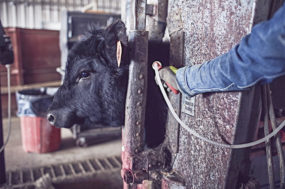“Thin cow disease” is a plague on many operations. Thin cows come in three varieties: poor genetics (aka hard doers), nutrition shortfalls or a combination of both.
Cowboy math tells us: genetics + environment = outcome. One of the final exams that determines the outcome for the production year is assessed upon pregnancy diagnosis. The outcome of a good conception rate versus a poor one definitely yields a lot of information about the factors of the equation.
When the news of a good conception rate comes in, we pat ourselves on the back, and we determine the cows and the management were aligned. When the bad news comes, it’s everyone else’s fault. That’s just human nature. To determine why a herd had poor conception, producers must be keenly aware of body condition and answer the question: Why were my cows and heifers too thin or not breeding?
In the era of “more performance is better,” cow herds will have increased mature weight and increased nutritional demand. Some published research suggests high-performing cattle have good fertility. This implies nutrition is abundant. When a train is running uphill, it either needs more coal or a lighter load to keep pace.
Late-gestation and lactating cows need planned and appropriate energy along with adequate protein for good conception. This is the environment part of the equation. If we have large cattle, we have to manage for a larger amount of energy.
On the other hand, if the feed and forage analysis suggests adequate nutrition is available prior to breeding, thin cows are likely the product of genetics. Genetically thin and narrow cows kill profitability. They need an extra three to six weeks postpartum, and it seems the shovel is never big enough.
This goes for small-, moderate- and large-framed cattle. We must be diligent to select replacements that will maintain an appropriate body condition within the boundaries of the operation’s resources. Cows that fatten too easily can also be an issue, but that’s a different disease for a different time. ![]()

-
Jason Duggin
- Beef Extension Specialist
- University of Georgia
- Email Jason Duggin







